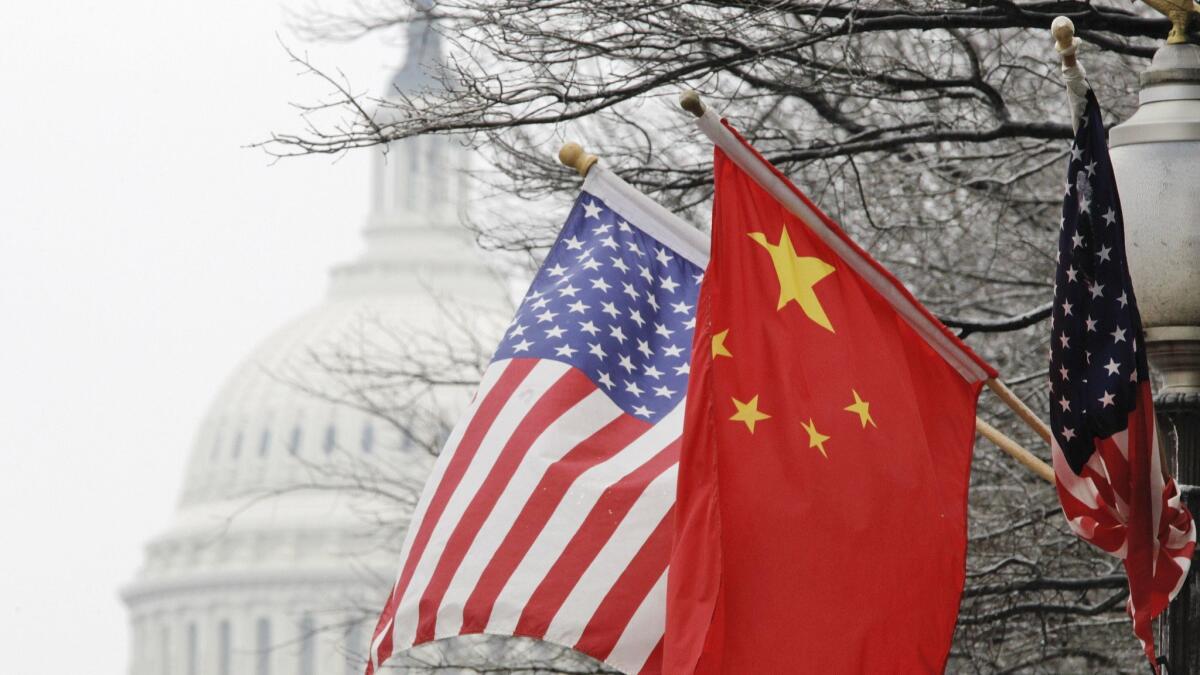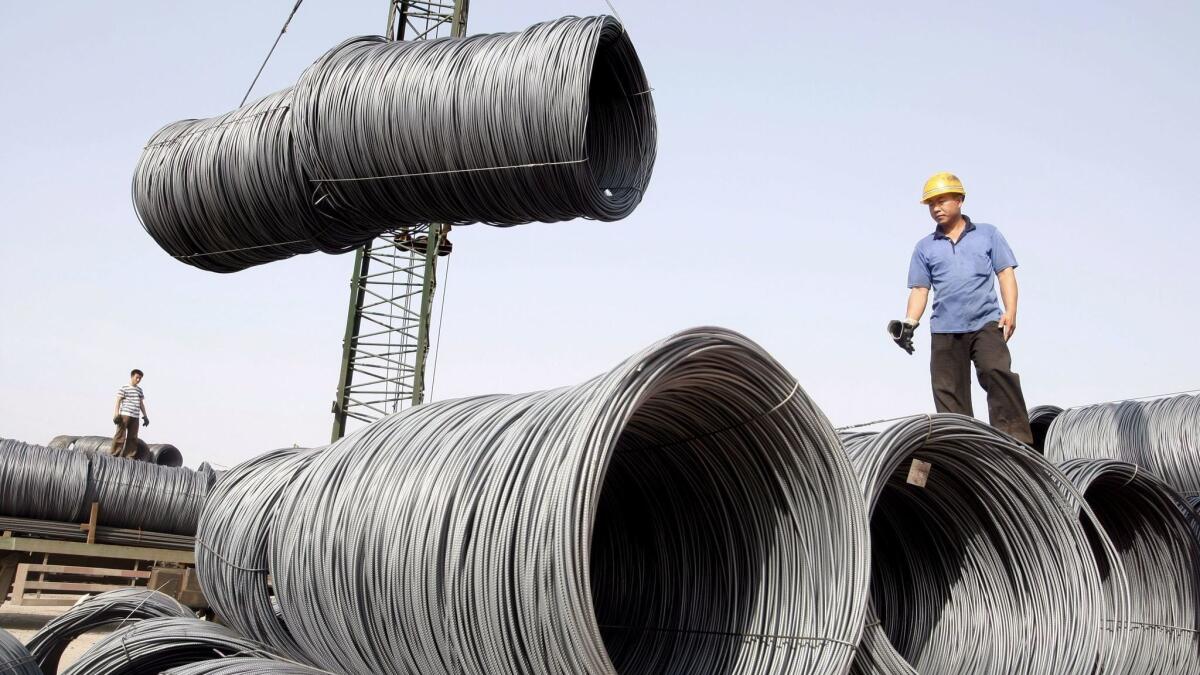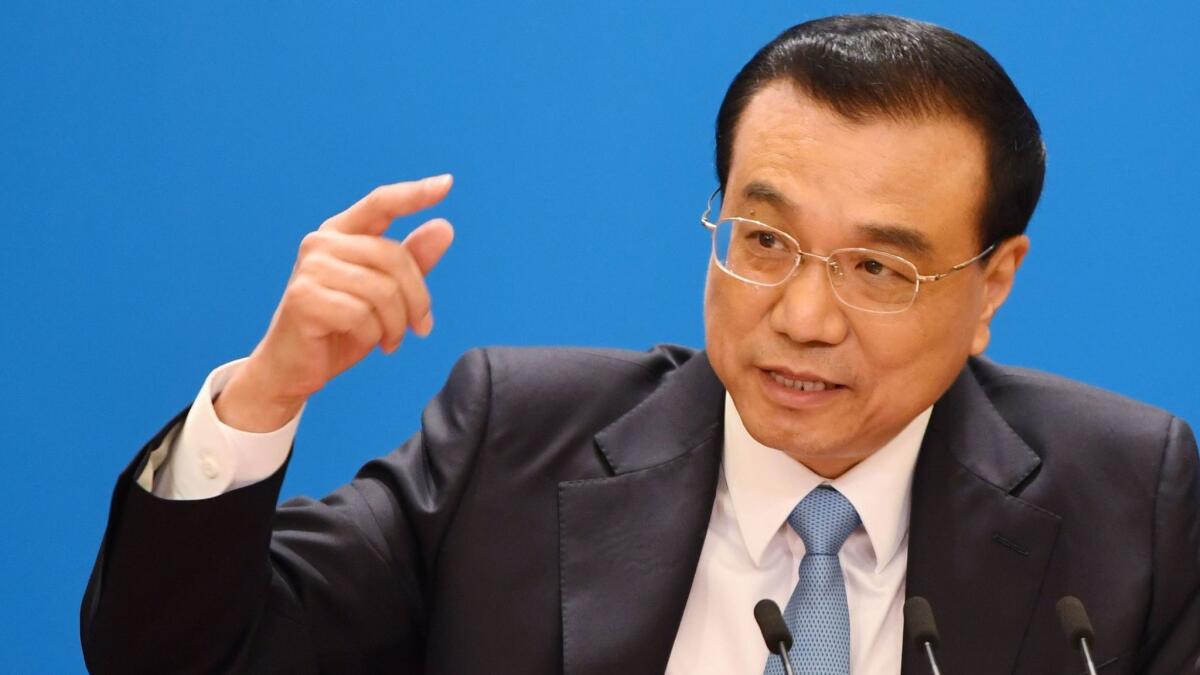In less than 30 days, Trump has risked a trade war with China and alienated U.S allies. Here’s how we got here

Despite warnings from key allies, members of his own party and economic experts, President Donald Trump further escalated his tariffs confrontation with China by ordering his chief trade negotiator to consider imposing tariffs on an additional $100 billion of products.
China, in return, said it didn't want a trade war, but was ready to fight Trump's policies "at any cost."
While the U.S. move late Thursday may not lead to a full-blown trade war, the tit-for-tat has raised the stakes of a conflict that is worrying Europe, Japan and American business leaders alike.
While Trump argues that his tariffs plan was necessary to rein in China's trade practices, his critics blame the president for risking a trade confrontation that could easily get out of hand. Here's how we got to this point.
March 2
Trump first announces steel and aluminum tariffs
Speaking at the White House, Trump makes a first statement on his plans to impose punishing tariffs on imported steel and aluminum. The president says he has decided on tariffs of 25% for foreign-made steel and 10% for aluminum, making no exceptions for close allies such as Canada, Britain or Germany.
China initially reacts with cautious criticism, urging the United States to abide by multilateral trade rules and do nothing to damage the fragile global economic recovery. Reactions are most furious in Europe where Trump's announcement triggers a sharp backlash, including threats of retaliation.
To prevent other countries from successfully challenging his move through the World Trade Organization, Trump argues that his tariffs plan is based on "national security" concerns. International treaties state that a country may claim exceptions from its trade obligations if national security is at stake. Trump later defends the measures, arguing that his national security reasoning is justified because the United States needs to produce more steel and aluminum for its defense sector.
His critics doubt that national security concerns are at the core of the measures, however, and Trump himself implies that the tariffs are designed to punish China for what the president considers an unfair trade relationship. In the past, Trump has repeatedly referred to cyber theft and a Chinese rule that forces U.S. companies to hand over proprietary technology if they seek to gain access to the Chinese market.

March 8
Trump offers temporary tariff exemption for Canada and Mexico
On March 8, Trump partially reverses his tough stance. Administration officials announce that the president will offer Canada and Mexico a temporary exemption from new tariffs on steel and aluminum imports.
Mid-March
U.S. resistance against tariffs plan on the rise
With Trump continuing to insist that the measures will apply to China and U.S. allies except Mexico and Canada, Republicans in Congress start to demand narrower measures to avoid an outright confrontation with major U.S. trade partners such as the European Union. U.S. trade associations join the protest, warning that any tariffs confrontation with China would be "harmful" to Americans.
March 20
China vows to open its markets further in response to Trump's tariff threats
As Trump prepares to impose $60 billion in tariffs against Chinese products, China warns of severe repercussions.
"No one will emerge a winner from a trade war," says China's premier, Li Keqiang.

March 22
EU, Brazil, South Korea and others get temporary exemptions from Trump's steel tariffs
Trump issues a temporary reprieve on tariffs on steel and aluminum imported from EU member states, South Korea and other U.S. allies, taking away some of the foreign and domestic pressure on him to reverse his plans.
March 22
"China would fight to the end"
China issues a statement in which it warns Trump that it won't back down: "China would fight to the end to defend its own legitimate interests with all necessary measures."
April 1
China says it will impose tariffs on 128 U.S. exports
In response to Trump's plan, China imposes similar tariffs on 128 U.S. products, including pork and certain fruits.

April 3
Trump administration targets $50 billion in Chinese goods with tariffs
In response, and in a move that may also end up threatening the supply chains of U.S. companies including Apple, the Trump administration unveils a list of Chinese products it seeks to hit with tariffs. Overall, the measures targeting electronics, aerospace and machinery products amount to $50 billion.
April 4
China targets 106 more U.S. products; Trump remains defiant
The world's two biggest economies get closer to a full-blown trade war, as China threatens to impose tariffs on 106 more U.S. products.
Meanwhile, Trump shows no sign of backing down from the escalation and continues to defy warnings from U.S. trade groups.
"When you're already $500 Billion DOWN, you can't lose!" the president writes on Twitter, referring to the 2016 U.S. deficit in goods and services trade, which he has repeatedly pointed out.
April 5
Trump seeks additional tariffs on $100 billion of Chinese goods
Trump responds to China's earlier announcement to target 106 more U.S. products.
In a separate development, China seeks consultations with the United States through the World Trade Organization's dispute settlement process — a mechanism that Trump so far doesn’t appear interested in engaging.
Get the L.A. Times Politics newsletter
Deeply reported insights into legislation, politics and policy from Sacramento, Washington and beyond. In your inbox three times per week.
You may occasionally receive promotional content from the Los Angeles Times.



